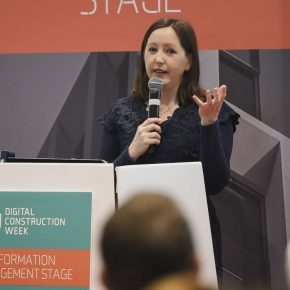
Focus on sustainability in £1.7bn project efficiency savings
GUEST BLOG Martin Townsend, Director of Sustainability, BREEAM reviews the Government’s Construction Strategy for 2016-20, published this week, that includes how it plans to be a ‘better client’.
GOVERNMENT CONSTRUCTION STRATEGY
A WELCOME SUSTAINABILITY FOCUS BUT SHORT ON VALUE-DELIVERING MEASURES?
The Government’s Construction Strategy for 2016-20, published this week, was unsurprising in pledging £1.7bn of efficiency savings on its projects by 2020 balanced by a plan to become a “better client” over the period. It also however contains within it a welcome re-focusing on the value of sustainability in delivering those savings, in terms of enabling and driving whole-life approaches to carbon reduction across construction and operation of buildings, a goal which BREEAM has already delivered substantial success on in the public sector.
But, and it’s a big but, while the strategy outlines a recommendation that Government departments demonstrate “clear leadership on whole-life cost and whole-life carbon,” it is pretty scant on the detail in terms of implementing measures which will deliver the value it wants to see, including how it will measure whole-life value to establish cost benefits. While important areas such as increasing collaboration within Government and externally with industry, measurement skills capacity within Government procurement and harnessing data and BIM to improve value all have their place in the document’s action plan, there seems to be little in the way of specific deliverables on the whole-life aspects. We can only hope that this will mean clarification will come quickly to facilitate the leadership the plan wants in public sector construction, given the rolling back of sustainability drivers such as zero carbon homes.

Paris PriceWaterhouseCooper’s BREEAM Outstanding refurbishment of its corporate HQ, One Embankment Place, London
The plan does contain some good, solid statements on the need to deliver whole-life value and reduce carbon. It reiterates the Construction 2025 industrial strategy targets of a 50% reduction in greenhouse gas emissions from the built environment, and emphasises the importance of the subsequent Infrastructure Review which established how increased resourced efficiency together with a reduced carbon footprint can be a facilitator to reduce capital and whole-life costs. In addition it says that robust measurement and analysis of sustainability indicators (which has of course been conducted within BREEAM for 25 years) will help improve the efficiency of the public sector estate. Encompassing a wide range of factors, the strategy says this “would be part of an integrated approach conducted by the Data and Cost Benchmarking Group” but this is unfortunately quite vague in terms of what is actually planned given the urgency of meeting carbon targets.
The strategy also says that driving the uptake of innovative sustainability approaches “would be considered by the Strategic Delivery Group and co-ordinated with the Green Construction Board and the ongoing outputs of the Infrastructure Carbon Review.” Again this seems somewhat amorphous, with no clarification given in the Summary Action Plan of when and how it will happen, but at least the direction of travel can be applauded. As can the final statement in the document that Government contracts “will encourage innovative sustainability solutions on carbon reduction where value can be demonstrated.” If this is driven through, supported by BREEAM assessments, then it will make a major contribution to achieving our national goals on carbon reduction, but a focus on cost savings must not be at the expense of innovation.
The strategy has some shortcomings however there is a welcome return to a focus on carbon reduction in addition to cost reduction. There needs to be greater clarity from Government going forward in how it is going to reconcile the balance between achieving best value on cost metrics and the whole-life value from sustainability which it has pledged to drive in the next few years. We look forward to clearer signs of how it is going to measure true whole-life value in its construction, and hope that although carbon is left until last in this important document, it is a case of last but not least.
What is BREEAM?
BREEAM is the world’s leading sustainability assessment method for masterplanning projects, infrastructure and buildings.
Latest news

30th April 2025
Digital Construction Week announces seminar programme for its landmark 10th edition
Digital Construction Week (DCW) returns to ExCeL London on 4 – 5 June 2025 with its most impactful programme yet. It brings together the best and brightest from across AECO, for two days of practical learning and idea sharing.
Posted in Articles, Building Industry Events, Building Industry News, Building Products & Structures, Building Services, Building Systems, Exhibitions and Conferences, Information Technology, news, Restoration & Refurbishment, Retrofit & Renovation, Seminars
29th April 2025
Senior pledges to ‘bee’ part of the solution with new biodiversity initiative
Senior Architectural Systems has installed its first on-site beehive, marking another step forward in its commitment to sustainability and biodiversity.
Posted in Articles, Building Industry News, Building Products & Structures, Building Services, Curtain Walling, Doors, Glass, Glazing, Innovations & New Products, news, Restoration & Refurbishment, Retrofit & Renovation, Sustainability & Energy Efficiency, Walls, Windows
29th April 2025
West Fraser range delivering key benefits for South-East carpentry company
An experienced carpenter and building site manager who has recently set up his own company is using high performance panel products from the West Fraser range.
Posted in Articles, Building Industry News, Building Products & Structures, Building Systems, Case Studies, Garden, Restoration & Refurbishment, Retrofit & Renovation, Sustainability & Energy Efficiency, Timber Buildings and Timber Products
29th April 2025
CPD Courses Available Online From Ecological Building Systems
Ecological Building Systems, a leading supplier of natural building products for sustainable construction, has revealed its comprehensive CPD programme for the year ahead.
Posted in Articles, Building Industry Events, Building Industry News, Building Products & Structures, Building Services, Continuing Professional Development (CPD's), Information Technology, Innovations & New Products, Insulation, Restoration & Refurbishment, Retrofit & Renovation, Seminars, Sustainability & Energy Efficiency, Training, Walls, Waste Management & Recycling
 Sign up:
Sign up: